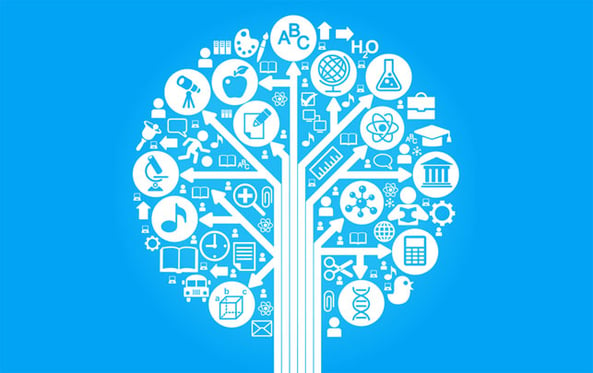
These words are perhaps three of the most over-used, under-appreciated and misunderstood terms in use since the dawn of the 21st century. Yet they refer to essential, powerful services, entities & relationships that are transforming how people interact with each other across an array of domains - e-commerce, publishing, communications, and even dating to name a few. This wave of change is now crashing on the shores of education and administrators, educators, parents and students are quickly coming up the curve on what these terms mean and how they can enhance the teaching & learning experience. At Education Elements, our thinking is focused on how these technology dynamics can enhance classroom learning and its supports.
I’ll start with Platforms which have become the essential intermediary component for a number of complex services, systems and users to find each other and derive value. Platforms have three essential properties - vision, reliability, & leverage - if they are to establish themselves and give rise to a thriving ecosystem which I’ll explain later. First, builders of platforms must be able to identify trends and articulate a vision for the future that is compelling to both users on one side and providers of products and services on the other. Second, platforms must be a consistent, reliable partner to users and providers so that availability and capacity can be taken for granted and their interactions can be content-rich and free of distractions. Lastly, platforms must provide users and providers with leverage so that essential functions and activities they must carry out are easier or more powerful using a platform than they would otherwise be.
Platforms give rise to ecosystems that often begin as two-sided, transaction-oriented groups of users and providers, but can flourish into multi-layered groups of actors who all benefit from the platform. The value of the ecosystem increases dramatically as its membership grows and its influence is focused in particular directions or on particular issues. At Education Elements, we have experienced remarkable growth over the last year in our ecosystem as our catalog of integrated content and tools providers expanded and demand for our services and software among schools and districts grew. In the next few months, we will be laying the essential groundwork for another even more dramatic year of growth in the ecosystem and the commensurate elevation of the value it provides to all members.
The term integration is typically used to refer to the critical point where the rubber hits the road in an ecosystem. It describes how members “plug-in” to the platform in order to participate in and share the benefits of ecosystem membership. Unfortunately, it is often a technical process that doesn’t lend itself well to explanation to all users and the dirty little secret of platform building is that not all integrations are created equal. This is an area where Education Elements is truly different and constantly strives to establish uncommonly deep integrations with a select group of providers. We take platform building seriously so we recruit our members carefully, build deeper integrations than most and invest in maintaining tight relationships. We deliver not only account provisioning and SSO, but also that essential usage, activity and performance data flow back to the platform. This enables our platform to make it easier for users to gain insight quickly and take appropriate action, often with partner products. In our experience, this high frequency interaction with data coupled with improved instructional practice and implementation fidelity can drive improved outcomes on a consistent basis in a variety of school conditions.
So these platforms and ecosystems take time to build momentum, but watch out once they get going. This will be a big year for Education Elements as we build on our initial success and help our ecosystem members realize more and more of the value of their investment. Our next announcement related to our content catalog is scheduled for March 1st, so stay tuned. Until then you can reach me at davids@edelements.com or @casadavid on Twitter.
